Math Topics
Learning Support
Professional
![]()

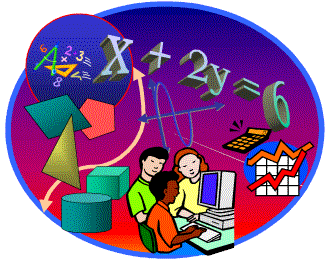 Our
collection of Math Resources has multiple pages designed for teaching
within specific grade bands. You'll also find valuable collections of
support and enrichment resources that will benefit all learners.
Our
collection of Math Resources has multiple pages designed for teaching
within specific grade bands. You'll also find valuable collections of
support and enrichment resources that will benefit all learners.
Math Resources (Page 1): K-8 Basic Mathematics and Skills Development, plus apps for mobile devices
Math Resources (Page 2): High School Subject Specific Resources, including apps for mobile devices: Algebra and Pre-Algebra, Geometry, Statistics, Probability, Trigonometry, Precalculus and Calculus
Math Resources (Page 3): K-12 Supplementary Collections: Miscellaneous Math Collections; Practical Applications--Math in Careers, Daily Life, and Across the Curriculum; and Problem Solving
Math Resources (Page 4): Enrichment and Extra Help: Math Contests, Competitions, Challenges, and Camps; Study Skills and Homework Help, plus tips for parent involvement; and Dictionaries, Glossaries, Reference Sheets, and Math Encyclopedias
Math Resources (Page 5): Lesson Plans and Worksheets, Design and Manage Your Own Lesson Plans, and Publishers' Textbook Support Sites
![]() Math
Resources (Page 6): The current page has subsections:
Math
Resources (Page 6): The current page has subsections:
![]()
![]()
 There's
really no excuse for an educator to skip teaching a math concept with which
you might not feel comfortable. And even if you have all the expertise
you need, your learners will benefit from videos for review and as their own
tutorials. They will also appreciate the personalized nature of
feedback to assignments via videos you create, rather than only
incorporating such feedback into a marked-up assignment or within a rubric.
There's
really no excuse for an educator to skip teaching a math concept with which
you might not feel comfortable. And even if you have all the expertise
you need, your learners will benefit from videos for review and as their own
tutorials. They will also appreciate the personalized nature of
feedback to assignments via videos you create, rather than only
incorporating such feedback into a marked-up assignment or within a rubric.
We're in an era of learning on-demand. Thus, learners can no longer use an excuse of not knowing how to do a problem because they missed a class, or did not take good notes, or did not understand a lesson. The internet is filled with resources for teaching and learning mathematics at all levels, which also enable learners to be exposed to multiple perspectives on a concept. So, consider using videos in instruction from trusted sources.
Read the two-part series on podcasts by Patricia Deubel, published in THE Journal:
 At
3Blue1Brown, a YouTube channel, author Grant Sanderson
provides "some combination of math and entertainment, depending on your
disposition. The goal is for explanations to be driven by animations and for
difficult problems to be made simple with changes in perspective" (About
section). He delves into higher level math topics, such as calculus,
linear algebra, and differential equations.
At
3Blue1Brown, a YouTube channel, author Grant Sanderson
provides "some combination of math and entertainment, depending on your
disposition. The goal is for explanations to be driven by animations and for
difficult problems to be made simple with changes in perspective" (About
section). He delves into higher level math topics, such as calculus,
linear algebra, and differential equations.
Boclips Classroom includes a library of "1.7M ad-free, curated, curriculum-aligned videos from 650 media brands and educatioinal creators." You can "search alignments to more than 70 curriculums like Common Core ... and a growing range of state-level curricula for ELA, Science, and Math." The database is searchable by subject, level, pedagogical use case, and more.
BrainPop has multiple videos categorized by subject, including for math. It is subscription-based.
Flocabulary for grades K-12 offers engaging standards-aligned lessons in math and other subjects. Each begins with a video featuring a hip-hop rap song on the vocabulary/concept addressed. Printable quizzes and activities are included. Student progress can be tracked. The product is not free, but there's a free trial.
Generation Genius offers math and science video lessons for K-8, which are organized within grade bands. Lesson plans, DIY activities, vocabulary, discussion questions, paper and online quizzes, teacher guides, reading material, and exit tickets are included. You can try it for free. Pricing options are available. Math videos are produced in partnership with NCTM and cover the majority (96%) of K-8 Common Core math topics.
![]() Khan Academy features K-12
video tutorials. Math videos are categorized by arithmetic and
pre-algebra, algebra, geometry, trigonometry and precalculus, calculus,
statistics and probability, differential equations, linear algebra, applied
math, and recreational math. Many of Khan Academy videos can also be
found on YouTube for Schools.
Khan Academy features K-12
video tutorials. Math videos are categorized by arithmetic and
pre-algebra, algebra, geometry, trigonometry and precalculus, calculus,
statistics and probability, differential equations, linear algebra, applied
math, and recreational math. Many of Khan Academy videos can also be
found on YouTube for Schools.
Kids Math Talk Podcast (about 45 minutes each) for parents and educators provides "tips and insights that will deepen mathematical understanding while also encouraging the conversation about math to remain active and positive" (Site description). Each episode also includes show notes.
Kopsas Math Tutorials includes an extensive collection of videos for algebra, trigonometry, calculus, geometry, probability & statistics created by Daniel Kopsas of the Ozarks Community College.
Learn Bright Videos for Kids on YouTube includes nearly 500 videos in several topics: science, reading, language arts, math, history, social studies, and more. Multiple videos feature American Sign Language.
Learn Math Tutorials on YouTube includes 150 videos featuring step-by-step tutorials on topics found in high school math courses, including calculus.
Mage Math has over 120 math videos and over 100 worksheets for grades K-6. There is also a fantasy adventure video game called Mage Math for ages 6-13, which includes the math videos. Kids fight the monsters, use magic, and practice math in the math village. Students find gold and other items in the levels in the game to enhance their immersion. Paid options are available.
Mathademics is a series of videos on YouTube suitable for elementary and middle school learners. Topics include fractions, decimals, number sense, equations, geometry and more.
Math Ed Podcast, hosted by Dr. Samuel Otten, includes episodes dating back to 2012. They feature conversations with math ed researchers on issues relating to math instruction.
MathFLIX from Loyola University Chicago School of Education is a real find. It has 1000 free "instructional math movies covering a wide range of math concepts including Number & Operations, Algebra, Measurement, Geometry, Data Analysis & Probability, Connections and Technology. In addition to MathFLIX’s valuable video resources, the site also features 400 downloadable worksheets that reinforce concepts and provide valuable practice." Each movie is from 4-7 minutes long.
Mathispower4u by James Sousa contains a collection of over 6000 mini-lessons and videos organized by course and topic: number sense, arithmetic/prealgebra, algebra 1, algebra 2, geometry, math for liberal arts, trigonometry, calculus 1, calculus 2, calculus 3, linear algebra, differential equations. The site also includes problem solving activities with video solutions. Multiple Common Core topics are addressed in these.
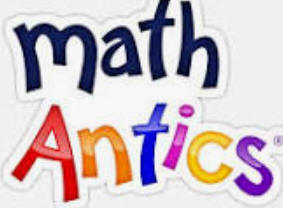 Math Antics includes a series of
free basic math videos on numeracy, arithmetic, algorithms, fractions, mixed
numbers, percentages, ratios and proportions, statistics, geometry,
measurement, integer arithmetic, exponents, and algebra basics. Also see
Math Antics videos on YouTube.
Math Antics includes a series of
free basic math videos on numeracy, arithmetic, algorithms, fractions, mixed
numbers, percentages, ratios and proportions, statistics, geometry,
measurement, integer arithmetic, exponents, and algebra basics. Also see
Math Antics videos on YouTube.
Math Mammoth includes free math videos on topics for elementary and middle school, including pre-algebra. Lists are organized by grade level and topic.
 Math
TV problem solving instructional video lessons are available for basic math, algebra, geometry,
trigonometry, precalculus, calculus, and study skills. This is a very comprehensive site
with "over 10,000 free math videos."
Math
TV problem solving instructional video lessons are available for basic math, algebra, geometry,
trigonometry, precalculus, calculus, and study skills. This is a very comprehensive site
with "over 10,000 free math videos."
Media4Math is by Emmy Award winning Edward De Leon. The site's mission is to "educate 21st-century students in real-life applications of math with digital technology." The Media4Math Library includes over 15,000 "instructional, remediation, and assessment resources." The Math4Media Classroom section provides iinteractive lessons and real-world applications of topics in pre-algebra, algebra, and geometry (About section). There is a blog. Under Standards, users can find the site's K-8 and high school resources related to the Common Core Math Standards. The site is subscription-based, but does include a section of free resources.
Minute Math offers math video lessons and examples in pre-algebra, algebra 1, algebra 2, geometry, calculus 1 and college algebra. It also offers online tutoring and there is a section with fun math videos. The site has over 4300 math lessons. The site was created by Sean Gannon, who has degrees in mathematics and math education and several years of teaching experience.
MIT BLOSSOMS features a free video library of math and science lessons primarily for high school students. "Every lesson is a complete resource that includes video segments, a teacher’s guide, downloadable hand-outs and a list of additional online resources relevant to the topic. Each 50-minute lesson builds on math and science fundamentals by relating abstract concepts to the real world. The lessons intersperse video instruction with planned exercises that engage students in problem solving and critical thinking" (About Us section). This site is an initiative of MIT's Learning International Networks Consortium.
NeoK12.com has gathered a series of math videos from the web, which are organized by numbers, arithmetic, shapes and angles, factors and multiples, fractions and decimals, measurement and data; ratio, rate, percent; algebra, geometry, statistics, probability, and trigonometry. All have been reviewed by K-12 teachers.
Numberock helps teach math to elementary learners ages 5-12 through videos incorporating animations with educational songs. It comes with downloadable lesson plans, worksheets, games, and anchor sheets, along with printable and digital self-graded Google Classroom task cards. The site is ad-free, and comes with a free trial.
Numberphile is produced by video journalist Brady Haran. His goal is to make math fun and interesting. There are hundreds of videos posted on YouTube featuring "mathematicians and other guests from around the world. Topics range from the sublime to the ridiculous ... from historic discoveries to he latest breakthroughs" (Numberphile: About section).
PatrickJMT's Math Channel on YouTube contains an extensive collection of his videos for arithmetic, algebra, linear algebra, trigonometry, differential equations, discrete math, probability and statistics, calculus, and more. They are free to use and are suitable for high school and above.
PBS LearningMedia includes free media resources searchable by grade level, standards, media type, and subject. Resources include video and audio segments, interactives, images, documents, lesson plans, productivity tools for teachers, self-paced lessons,and student-oriented activities. You'll find media from NOVA, Frontline, American Experience, and other public broadcasting and content partners. The mathematics section features K-8 mathematics strands, and high school number and quantity, algebra, geometry, functions, statistics and probability. Highly recommended.
ProfRobBob on YouTube has a growing collection of over 750 math education videos related to Algebra, Geometry, Algebra 2, Trigonometry, Precalculus, Calculus 1, Calculus 2, and AP Statistics.
Teacher Tube contains numerous short video clips on math topics, which might be used to supplement classroom instruction or for topic tutorials.
TED-Ed contains video-based lessons organized by age and subject, which also include questions to think about (e.g., multiple choice, open ended), resources to learn more on the topic, and questions for discussion. You'll also find videos organized by themes, such as Math in Real Life.
Why U contains animated videos in pre-algebra and algebra, topology, and infinite series. "Rather than focusing on problem solving, the objective is to give insight into the concepts on which the rules of mathematics are based." Beginning with a humorous look at the Dawn of Numbers, the pre-algebra tutorial videos (over 30 of them) lay the foundation for high school and college algebra. The algebra tutorial videos (over 70 of them) explain not only the how, but why the rules of algebra work. Topology (3 parts) "takes a humorous look at the topology of curved space." K-12 through Ph.D. learners will enjoy these. The infinite series animation "makes complex concepts such as summation notation, infinitesimals, and convergence easily comprehensible." Videos were written by Steve Goldman and animated by Mark Rodriquez. The animations are outstanding.
YouTube: Math Learning: While YouTube is controversial and some schools ban its use, the content at YouTube for math learning would be appropriate. YouTube Kids includes parent resources and is also appropriate for its family-friendly videos on a multitude of topics, such as arts and crafts, toys and play, learning and hobbies, shows and cartoons, music and dance, games, and more.
Even if your school bans YouTube, there are still ways to use YouTube videos safely with the following resources:
Educators who wish to use YouTube should also learn more about copyright of YouTube videos and Creative Commons licenses, which "provide a standard way for content creators to grant someone else permission to use their work." Educators might also appreciate YouTube Teachers, a dedicated channel, which is "for educators everywhere to learn how to use YouTube as an educational tool. There are lesson plan suggestions, highlights of great educational content on YouTube, and training on how to film your own educational videos" (Profile: About me section).
Also consider the following books:
|
Podcasting for Beginners Value Edition: How to Start and Get Your First 1000 Downloads, Featuring Podcasting Made Simple + Podcast Marketing by Daniel Larson (2021). |
Podcasting for Dummies, 4th Edition, by Tee Morris and Chuck Tomasi (2021). |
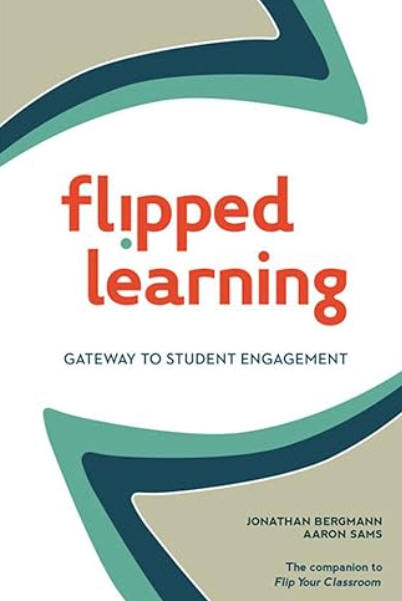
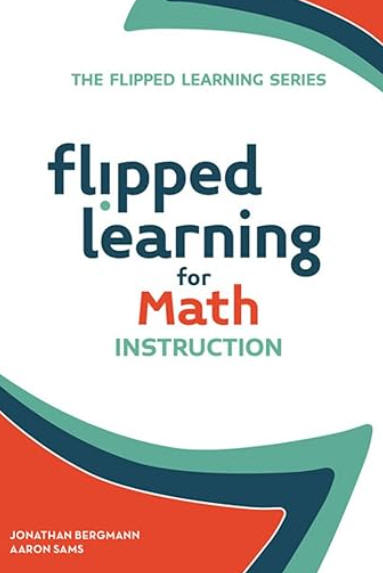 Flipped Learning
(2015) is advocated by Jonathan Bergmann and Aaron Sams. In this model, teachers
often incorporate videos, self-made or made my others,
that students view outside of class. Typically,
"flipped" means that what was traditionally presented in
class (e.g., the lecture) is now viewed on the video at
home, and what was traditionally assigned for homework
(e.g., problem sets in math) is now done during class time.
Flipped Learning
(2015) is advocated by Jonathan Bergmann and Aaron Sams. In this model, teachers
often incorporate videos, self-made or made my others,
that students view outside of class. Typically,
"flipped" means that what was traditionally presented in
class (e.g., the lecture) is now viewed on the video at
home, and what was traditionally assigned for homework
(e.g., problem sets in math) is now done during class time.
Bergmann and Sams elaborated on the model in relation to math in Flipped Learning for Math Instruction (2015). Each chapter provides "practical guidance, including how to approach lesson planning, what to do with class time and how the flipped model can work alongside learning through inquiry" (Description online).
Here's how a typical two-day cycle of instruction might work when using this instructional strategy. On Day 1 learners explore content and are introduced to new concepts via an activity that builds on prior knowledge. They view instructional video that night for homework, which replaces the direct instruction of a traditional in-class lecture. The video may or may not involve interactivity. They might complete a reflective activity as proof of viewing the video. On Day 2, discussion ensues so that they get their additional questions answered. During class learners then engage in activities for applying their knowledge, working on problem sets from learning packets and may then complete those for day 2 homework and preparing for a possible quiz the following day.
A quick answer is that a flipped classroom model has the potential to enable learners to have more class time to interact with their teacher (the content expert) for enhancing achievement and with fellow classmates on a given topic. Kelly Walsh (2013) noted that a flipped classroom offers greater opportunities for active learning, if implemented correctly. Such active learning comes in many forms such as experiential, project-based, problem-based, and inquiry-based learning. Flipped instruction has a relationship to implementing constructivist learning theory and supports mastery learning owing to greater opportunities for differentiation and personalization of learning.
For an example, see Flippedmath.com, which promotes "Flipped Mastery Learning: Mathematics Without Boundaries." Free online courses in Algebra 1 (Common Core and Traditional), Geometry, Algebra 2 (Common Core and Traditional), Pre-Calculus, and AP Calculus include multiple videos. They were developed to "allow students to demonstrate mastery of all concepts and progress at their individual pace." Teacher resources include How Flipped-Mastery Works.
There are several considerations before making a decision to use this method, however. Ben Stern (2012) posed Five Questions to Ask Before Flipping a Lesson:
Prior to using this method, survey learners to find out if all of them have access to technology when they are at home, what technology that is, and if there will be more than one person needing to use that technology. Most likely, you will need to provide opportunities at the school for learners to view videos before, during, or after school hours.
Access is not the only issue. In a report, Student Home Internet Connectivity Study, released by the Consortium for School Networking (2021), researchers found that "Learning with video is essential for education." However, it "requires sufficient upload and download speeds." For home connectivity, they recommended an adequate upload speed of 12 Mbps per student, and for downloads 25 Mbps per student, rather than per household. Additional bandwidth might be needed, if other household members are using bandwidth for other non-educational activities. Further, as students might be using district provided devices and/or their own personal devices, the "quality of a student’s experience can be impacted by the age, type, quality and configuration of the device they’re using."
You need to determine how you will know that all learners viewed videos before classtime. You might provide a worksheet with a list of guiding questions for them to answer while viewing the video, or a few math problems to complete related to content within the video, and a place on the worksheet for them to jot down questions they might still have. You can also set up an online discussion forum where students can post their answers and questions.
You'll need to decide if you have time and skills to create your own videos or will use videos created by others. If the latter, you'll need to preview that content to ensure quality. If you make your own, make your video interactive, perhaps with interactive quizzes, and make it short. A series of five to 10-minute videos will be more engaging than one long 40 to 50-minute lecture video, and will make it easier for students to review content as needed.
Mathematics educators who decide to use the flipped model or who are contemplating using it might also consider the viewpoint of Linda M. Gojak (2012), a former NCTM President, in which she stated the following:
Although the flipped classroom may be promising, the question is not whether to flip, but rather how to apply the elements of effective instruction to teach students both deep conceptual understanding and procedural fluency. Flipped lessons that simply demonstrate how to do a procedure do not encourage understanding, do not ensure that students will remember the procedure, and do not promote adaptive reasoning. A single instructional approach is unlikely to have a major impact on student achievement once the novelty wears off. A combination of well-thought-out strategies that consider student needs, incorporate the characteristics of effective instruction, and develop understanding of mathematical concepts will have the greatest impact on student achievement. (para. 6)
Read Dr. Patricia Deubel's article published in THE Journal: Is it really hip to flip? (2013, January 16).
In his Casting Out Nines blog post, Dr. Robert Talbert (2014) addressed the issue of "Flipped learning skepticism: Is flipped learning just self-teaching?" For example, college students have questioned why they are paying tuition if they can just teach themselves. Talbert noted that flipped learning "provides is space and time for instructors to design learning activities and then carry them out, by relocating the transfer of information to outside the classroom. But then the instructor has the responsibility of using that space and time effectively. And sometimes that doesn’t work. In particular, if there’s no real value in the class time, then the students are not mistaken when they say they are teaching themselves the subject, and they are not wrong to resent it." The theme of this blog is "Where math, technology and education cross."
Flipped Learning Network is an additional resource for professional development opportunities, and gaining knowledge, skills, and resources for flipped learning.
Flipped Professional Learning (2018) from Frontline Education delves into the How (and why) to structure a flipped or blended learning model for individuals and groups.
If you decide to create your own instructional videos, you need to consider the attention span of your audience. Brame (2016) found that student engagement with instructional videos wanes after about 6 minutes, so making videos short and targeted on learning goals is essential. Developers should keep in mind the three key components of cognitive load (sensory memory, working memory, long term memory), elements that impact engagement, and elements that promote active learning. These latter include guiding questions, embedding questions within the video, interactive features giving learner control on viewing content, and making videos part of a larger homework assignment. Audio and video components should complement each other, rather than being redundant. Use on-screen text or symbols to highlight important information (e.g., 2-3 key words, change in color or contrast, an arrow to draw attention to a region on the screen).
Richard Rose (2017) provided the following six dimensions to consider for improving quality:
Dian Shaffhauser (2018) provided additional tips for video content. To better engage learners with the content of the video, start with a driving question--one that does not have an immediate answer. Animations (or other imagery) might be used to provide a visual link to what is spoken as they enhance memory and recall. An animation you create might help avoid copyright infringements. If you embed quizzes in the video, consider higher-level questions that strive for synthesis, as opposed to questions that only require recall. Answers can be used to inform instruction, rather than being graded. A video can be further enhanced by including outside experts to add their tips and perspectives to content. In-video open-ended prompts can be used to motivate viewers and take learning to the next level through challenges, and they can encourage further discussion. When placed at the beginning of a video, they can also provide a reason to pay attention.
Finally, a quality instructional video is a product. As such, before a roll-out of your video, test it with a group of people similar to your target audience. Use their feedback to tweak the video, as needed (Rose, 2017).
 EDpuzzle is a
free tool for educators to use with any
video. However, there are paid options. It's ideal for flipped learning. One
concern educators have is whether or not learners view the
videos. EDpuzzle solved this as the tool allows you to
embed quizzes or questions with immediate feedback within a
video to check for understanding and to track progress.
You can add audio notes to any video, crop videos, find
videos (e.g. from Khan Academy, YouTube, and
others), or upload your own videos to the site.
EDpuzzle is a
free tool for educators to use with any
video. However, there are paid options. It's ideal for flipped learning. One
concern educators have is whether or not learners view the
videos. EDpuzzle solved this as the tool allows you to
embed quizzes or questions with immediate feedback within a
video to check for understanding and to track progress.
You can add audio notes to any video, crop videos, find
videos (e.g. from Khan Academy, YouTube, and
others), or upload your own videos to the site.
 PlayPosit
"is an online learning environment to create and share
interactive video lessons. Teachers begin with any online video (screencasts, Khan Academy,
TED, etc.) and transform what is traditionally passive content into an
active experience for students, with time-embedded activities." (What We Do
section). This site works well with flipped learning as a way to ensure learners
interact with video content. Features such as multiple choice, free
response, reflective pause, and answer feedback can be used.
PlayPosit
"is an online learning environment to create and share
interactive video lessons. Teachers begin with any online video (screencasts, Khan Academy,
TED, etc.) and transform what is traditionally passive content into an
active experience for students, with time-embedded activities." (What We Do
section). This site works well with flipped learning as a way to ensure learners
interact with video content. Features such as multiple choice, free
response, reflective pause, and answer feedback can be used.
For additional resources for creating videos, see our section: Technology Integration: Multimedia in Projects: Tools for Creating and Viewing Media.
Many sites exist for storing media online. Teachers must ensure, however, that the site is approved for use by learners and not blocked. Possibilities for online video storage sites include:
 If you are considering using a whiteboard in
instruction, remember that it comes with mixed reviews.
While it has prized features, consider that it's not the
medium, but instructional methods that cause learning.
If you are considering using a whiteboard in
instruction, remember that it comes with mixed reviews.
While it has prized features, consider that it's not the
medium, but instructional methods that cause learning.
Read Dr. Patricia Deubel's article published in THE Journal: Interactive Whiteboards: Truths and Consequences (2010, August 4).
Also consider reading The Interactive Whiteboard: Uses, Benefits, and Challenges. A Survey of 11,683 Students and 1,131 Teachers by Thierry Karsenti (2016) published in the Canadian Journal of Learning and Technology. Technical problems may require teachers to prepare alternative lessons, a time-consuming activity. Karsenti's survey revealed ten main ways that teachers were using their interactive whiteboards (IWB), and noted "Apparently, the IWB was used mainly to project content onto the screen, and not as an interactive digital tool to support teaching and learning, with only 2.6% of the main uses reported by teachers described as interactive" (p. 8). Further, the IWB is often accompanied by a lecture-style approach to teaching, posing "some conflict between open teaching approaches (also called student-centered learning, among others) and IWB use, often with lecture-style teaching" (p. 16). Ultimately, Karsenti's conclusion is the same as I noted above, "effective use of technology tools such as the IWB depends on how teachers and students use them" (p. 17).
BenQ, Ikinor, LG, Promethean, Samsung, Smart Technologies, Vibe, and ViewSonic are among whiteboard providers.
When using a whiteboard or a projector, consider the following tips suggested by Lisa Nielsen (2010):
Canva offers a free online whiteboard tool. Per the site, "Canva Whiteboards gives you infinite space to collaborate. Brainstorm, run a strategy session, or plan out a project."
Classroomscreen is an online whiteboard with free and paid options. The free version includes 25 widgets, an annotation bar, remote poll voting, and you can save three name lists and your own widget bar layout, and have access to the site's template library.
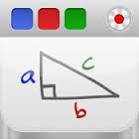 Turn
your iPad into a recordable whiteboard and screencasting tool with
Educreations Interactive Whiteboard, a free app (with in-app purchases). Use it to create
video tutorials simply by touching, tapping, and talking.
Turn
your iPad into a recordable whiteboard and screencasting tool with
Educreations Interactive Whiteboard, a free app (with in-app purchases). Use it to create
video tutorials simply by touching, tapping, and talking.
Explain Everything is a screencasting, whiteboard, and design app. It's promoted as a "complete online and mobile whiteboard app." You can import and insert any document, picture, or video; draw and annotate in color; move and animate objects; zoom and pan; record and play; and export and share. Use it to create tutorials and video lessons. You can collaborate anywhere and set up group activities.
FigJam is the online whiteboard part of Figma, the latter of which is a professional design tool. Both are free for educators and students. Use FigJam for classroom discussions, brainstorms, and group work. There are multiple ready-made templates for classroom use in K-12.
![]() FluidMath from Fluidity
Software is a teaching and learning tool for Pen-Centric platforms,
including Tablet PCs and interactive whiteboards. While not free, its
capabilities will enable you to use your own handwriting (very convenient
for entering math symbols) to create, solve, graph and automatically animate
math and physics problems. These resulting dynamic instructional
materials will help learners to explore and better understand concepts.
FluidMath from Fluidity
Software is a teaching and learning tool for Pen-Centric platforms,
including Tablet PCs and interactive whiteboards. While not free, its
capabilities will enable you to use your own handwriting (very convenient
for entering math symbols) to create, solve, graph and automatically animate
math and physics problems. These resulting dynamic instructional
materials will help learners to explore and better understand concepts.
HOT!: Math Whiteboard is a free collaborative whiteboard for teachers, students, and tutors, designed for mathematics teaching and learning. It integrates with FluidMath. There is a gallery of examples that you can use or create your own whiteboard. It functions like a graphing calculator, you can write or type math, perform calculations from arithmetic to calculus, import pdf files. Best of all it--it runs in any browser on any device.
Miro includes a free digital whiteboard for online education. Luke Edwards (2024) provided some tips on How to Use Miro to Teach. There are many options beyond being a presentation tool. You can use it to video conference and create flowcharts, images, mind maps, diagrams, timelines, and more. There are ready-made and custom templates. The site also includes paid options.
HOT!: New Jersey Center for Teaching and Learning: Course Materials include free STEM resources for K-12, including advanced level courses. Mathematics course materials at the elementary K-8 level are posted by grade level and also include accelerated materials for grade 7 and algebra 1 at grade 8. High school courses include algebra I and II, geometry, pre-calculus, AP Calculus at AB and BC levels, and Integrated Math levels I, II, and III. They are also available in Spanish. You'll find presentations, homework assignments, lab activities, and assessments in unit resources, as appropriate for each course. Each course is designed for use with interactive whiteboards and polling devices. Read more on the Progressive Mathematics Initiative and the teaching methodology used.
 OpenBoard is
free open source interactive whiteboard software designed for
schools and universities. Download it for Windows, MacOS, or Linux.
No registration is required. "Use a pen tablet, an interactive
whiteboard or even a mouse to write and annotate your course." There
is documentation for its use and a discussion forum. This software was
originally developed by the University of Lausanne in Switzerland.
OpenBoard is
free open source interactive whiteboard software designed for
schools and universities. Download it for Windows, MacOS, or Linux.
No registration is required. "Use a pen tablet, an interactive
whiteboard or even a mouse to write and annotate your course." There
is documentation for its use and a discussion forum. This software was
originally developed by the University of Lausanne in Switzerland.
Padlet is an online whiteboard. Use this site for creating visual boards for organizing and sharing content. Free and paid options are available.
Scratchwork is a digital whiteboard created by mathematicians. Use it for collaboration in math, physics, chemistry, music, and any subject where you need drawings, expressions, equations, diagrams, and so on to communicate ideas. Free and paid versions available. The paid version includes ability to type in LaTeX.
ShowMe is a free app, which also turns the iPad into an interactive whiteboard, allowing you to record voice-over lessons and share them with others. You can easily draw with your fingers or stylus, and add images. There is an extensive collection of lessons and "how-to" examples in multiple content areas. For math, these range from arithmetic through calculus.
TeacherLED Interactive Whiteboard Resources for math includes interactives categorized for algebra, data handling, number; shape, space & measure; general maths, and investigations. Even without the whiteboard, you can investigate these online using your computer.
TI-SmartView emulator software for the TI-84 Plus Family of graphing calculators from Texas Instruments allows educators to project interactive representations on their existing projection systems or interactive whiteboards.
Topmarks Interactive Whiteboard Resources from the UK are organized by subject, age group, and category. Age groups range from pre-school through high school.
Whiteboard.fi is a free online whiteboard for teachers and students. "By creating a class and letting your students join, everyone will get a digital whiteboard. You as a teacher see all your students' whiteboards in real time, so you can follow their progress. The students only see their own whiteboard and the teacher's." It works on any device. "You can draw simple math using the free hand drawing tool or type math using the text tool. For more advanced mathematical equations or expressions, you can use the math tool." Do check this out!
Zoom for video conferencing and web conferencing also has an online whiteboard for collaboration, which is included with all Zoom accounts. It works with any device running Zoom. In his Zoom blog post, Pat La Morte (2022, May 11) provided Zoom Whiteboard Tips for Teaching and Collaborating in the Classroom.
Back to top | Math Resources: Page 1 | 2 | 3 | 4 | 5 | 6
Brame, C. J. (2016). Effective educational videos: Principles and guidelines for maximizing student learning from video cotent. https://www.lifescied.org/doi/pdf/10.1187/cbe.16-03-0125
Consortium for School Networking. (2021, May 4). Student home internet connectivity study. https://www.cosn.org/cosn-news/cosn-releases-key-findings-of-breakthrough-study-on-student-home-connectivity/
Edwards, L. (2024, September 23. Miro: How to use it to teach. Tech & Learning. https://www.techlearning.com/how-to/miro-how-to-use-it-to-teach
Gojak, L. M. (2012, October 3). To flip or not to flip: That is not the question! NCTM Summing Up. https://www.nctm.org/News-and-Calendar/Messages-from-the-President/Archive/Linda-M_-Gojak/To-Flip-or-Not-to-Flip_-That-Is-NOT-the-Question!/
Nielsen, L. (2010, May 10). The ten no nos of teaching with a projector or interactive whiteboard. The Innovative Educator. https://theinnovativeeducator.blogspot.com/2010/05/ten-no-nos-of-teaching-with-projector.html
Rose, R. (2017). 6 dimensions for more effective online instructional videos. Campus Technology, 30(3), 13-19. https://campustechnology.com/articles/2016/12/07/6-dimensions-for-more-effective-online-instructional-videos.aspx
Schaffhauser, D. (2018, February 28). 5 ways to make your videos binge-worthy. Campus Technology. https://campustechnology.com/Articles/2018/02/28/5-Ways-to-Make-Your-Videos-Binge-Worthy.aspx
Stern, B. (2012, October 31). Five questions to ask before flipping a lesson. https://www.edsurge.com/news/five-questions-to-ask-before-flipping-a-lesson
Talbert, R. (2014, April 28). Flipped learning skepticism: Is flipped learning just self-teaching? [Blog post]. https://www.chronicle.com/blognetwork/castingoutnines/2014/04/28/flipped-learning-skepticism-is-flipped-learning-just-self-teaching/
Walsh, K. (2013, November 3). Flipping the classroom facilitates active learning methods – experiential, project based, problem based, inquiry based, constructivism, etc. https://web.archive.org/web/20230929133018/https://www.emergingedtech.com/2013/11/flipping-the-classroom-facilitates-these-5-active-learning-methods-and-much-more/
![]()
Back to top | Math Resources: Page 1 | 2 | 3 | 4 | 5 | 6
![]() See
related topics: Math Manipulatives
and Standardized Test
Preparation.
See
related topics: Math Manipulatives
and Standardized Test
Preparation.